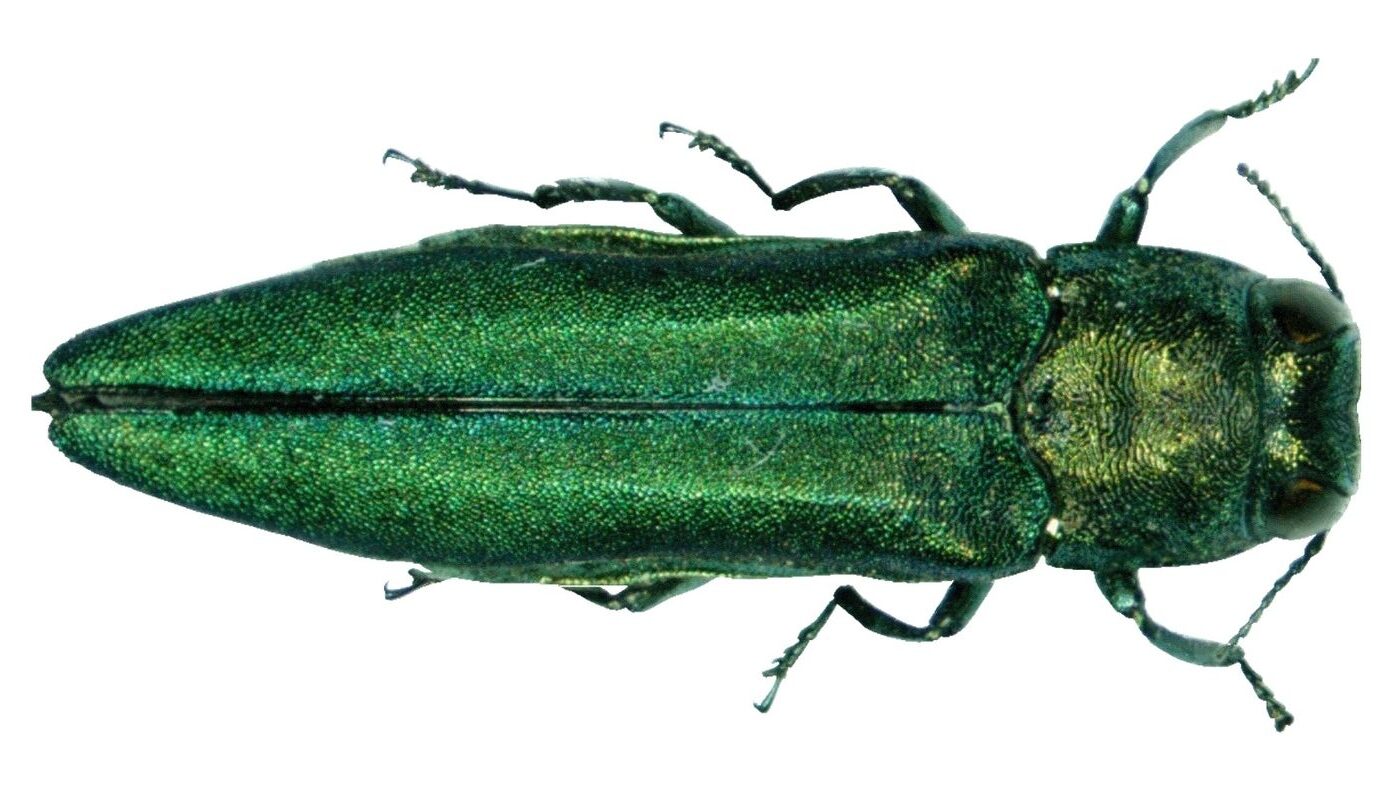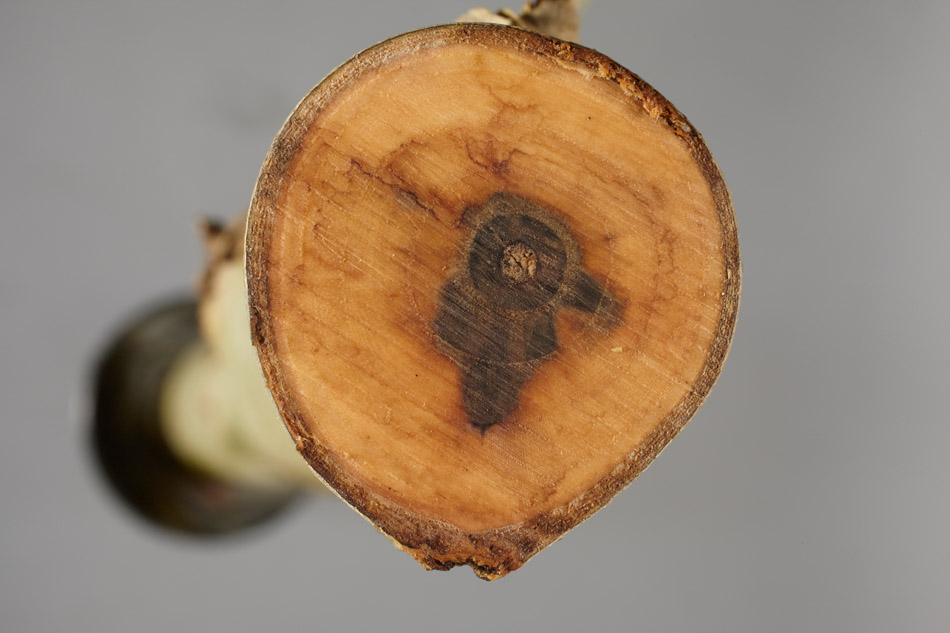By: Per Friis Knudsen
In my last article, I went into depth with a specific species; and I’ll do the same again. However, this time around, it is from a different aspect. We will continue our journey with the species of ash by looking into the future of this species.
A quick recap from last month’s article: Ash (Fraxinus) consistent of up to 65 mostly deciduous species worldwide. It is mainly found in Europe and North America, but it can also be found in some parts of Asia and similar species exists in the Pacific regions. It has this wonderful helicopter seed that can be transported a great distance by wind which is just one of the many characteristics of ash. But ash is having a tough time and the species is fighting a terrible battle to survive for generations to come. There are two main reasons for this battle.
The Emerald Enemy
In North America, the Emerald Ash Borer (Agrilus planipennis) somehow immigrated from regions in North-East Asia (China and Russia) back in the 90’s or earlier. Most likely, it was hidden or stocked in imported wood packaging material. It is estimated that Emerald Ash Borers have killed tens of millions of trees alone in the US and in the early 2000’s, it was found in Eastern Europe, where it is expected to spread to Northern- and Central Europe by 2030’s.
It is a wood-boring beetle, and the larvae is the cause of the problem. It is a picky little bugger that feeds on the sugar tissues under the bark (also called phloem). Here, the beetle lay its egg and the larvae eat or attack the sugar tissue on the inner bark. This prevents the transport of nutrients and water from the trunk up into the tree. It quite simply cuts off the food supply for the tree and the crown start to die already within the first year of an attack. The lower branches follow soon after. Ash trees that are attacked by the Emerald Ash Borer will typically die within 3 years.
How can we fight the little bugger?
Different countries have tried to employ different measures to stop the infections of the Emerald Ash Borer. Knowing that a beetle can fly but not very long, the spread is mainly human as we act by unintentionally transporting this destructive pest in ash products such as branches, logs, wood chips and firewood. Shipments of ash logs with bark are now regulated when they come out of quarantined areas. Many years ago, China banned all import of ash logs. Instead, ash logs are often sold into Vietnamese sawmills in great volume, where sawn lumber is then exported into China. The US has quarantined the areas or states where affected trees are found. Transporting of firewood out of the quarantined areas is illegal and they have road signs trying to remind the population about this in similar style to a speed limit sign.
In my research to this article, I have read that federal regulators and researchers are pursuing a different strategy to stop the Emerald Ash Borer: biological control. Scientists think that tiny parasitic wasps, which prey on Emerald Ash Borers in their native range, hold the key to curbing this invasive species. I hope to hear good news on their effort in near future.
Ash Death
More recently, we have the Ash Death as I call it. This occurs in European Ash (Fraxinus excelsior) and is fungi infection (Chalara fraxinea or Hymenoscyphus pseudoalbidus) that causes the death of some ash trees. It started in 2005/2006 in Eastern Europe and a few years later it had spread like an epidemic to most of Europe. It is likely spread by wind but also from imported plants. It is a chronical disease where the trees rot from inside, lose it leaves and the crown dieback. I have visited forests in Denmark where my father showed me how he could lay down a small ash tree with his bare hands, because it was dead on the inside already. It quite simply snapped like a twig.
It wasn’t until 2009, there was a breakthrough by researchers in Switzerland who found the fungus trace on leaf litter on the forest floor and with the help of DNA-testing, they found a connection to the infected ash trees. These fungi attacks work a bit like an influenza-virus for us human. The fungus does not necessarily kill the tree by itself but weaken the immune system and other diseases can and will attack the tree and end its days. From first indications of chalara fraxinea fungus attack, it will take more or less 5 years until the tree dies. It has also been proven that younger trees are more prone to attacks than old mature trees as older trees seem to be stronger and more resistent.
Tough odds
The bottom line is that these combinations of Emerald Ash Borer and fungi attacks can possibly wipe out the ash species completely. There is currently no effective cure on how to handle this situation. What I know is that most forest owners try to cut any tree that show symptoms of ash death, but it does not solve the problem because the spread lives and grows on leaf litter on the forest floor. Like that wasn’t enough problems for our beloved ash, I was taught by forester Kai Boisen that young ash trees have a dangerous start on life because deer loves to eat the tiny little tree sprouts. It is their favorite snack. To me, it is comparable to how the turtles lay egg in the beach sand and only 1 in 1,000 survive into adulthood.
Danish Example
I am very inspired by this Danish forester, who makes small videos from Danish forests. In this video, he shows what effect the Ash Death has on the trees and how easily they dissolve. I think it is a good video; however, it is in Danish, but it shows some good examples about our topic for this article.
I hope the breeding program enforced across Europe will result in resistance trees, the fungus will die out and re-establish our dear ash forest again.




